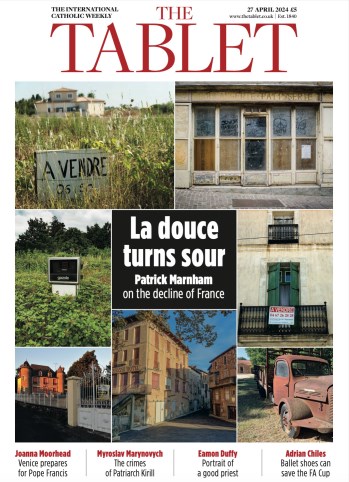It’s not so long since Leos Janácek was a frightening name on the peripheries of opera, composer of spiky pieces contemporary with Puccini’s last years but too modernist for the average audience. But in the past 30 years – thanks largely to the work of the great conductor Charles Mackerras – the Czech composer’s operas have become ubiquitous, a voice whose music is utterly individual, moving, beautiful and dramatic.
And yet this 1921 opera had never been performed in Denmark, so it was a brave idea of Annilese Miskimmon’s, the Northern Irish artistic director of Jyske Opera (Jutland Opera or Danish National Opera) to choose it as her directorial debut with this well-established touring company.
Miskimmon and her designer, Nicky Shaw, in a nice concession, relocated the piece from its origins in a grim play by Nikolai Ostrovsky set in the Russian hinterland to an early-twentieth-century Scandinavia, immediately slotting the thing into the local comfort bracket of Ibsen and co. Janácek’s aims and focus are different from Ostrovsky’s, and this removal was a neat way of clearing out accumulated clichés.
It’s a sad story, but told with such radiance that it becomes oddly triumphant. Katya is married to feeble Tichon; they live with his monstrous mother. Tichon goes away on business and Katya immediately has a fling with a neighbour. Tormented with guilt, she drowns herself in the Volga.
This is often told as a tale of a girl crushed by hypocritical, vicious society, but Janácek actually takes all that for granted and focuses vividly on Katya, a sweet and mild young woman with untold depths of heart and passion; three scenes out of the opera’s six are, effectively, long soliloquies. Miskimmon emphasises her apartness: amid scenes of simple naturalness – there is a striking lack of anything forced, actorly or hackneyed about the characters – and the deceptively attractive prison of her home’s baby-blue panelling, Katya stands alone, dreaming her dreams and puzzling over a kind of unknown, unacknowledged alienness, to an accompanying orchestra that is her character, a thing of soft textures and melting, transcendent harmonic resolutions that bring you out in goose-bumps.
Katya’s hopeless unsuitedness for this world is set against both stern, awful Victorian elders and the simple, beautiful love story of her sister and her beau, an affair that takes place in a lovely, nostalgic northern twilight to music of billowing romanticism. A storm breaks and amid scenery suddenly turned stark and expressionistic Katya cracks and confesses her infidelity in front of everyone. Janácek gives her a last scene that is wracked and desperate yet full of a kind of nobility – a transcendent 10-minute “Liebestod”, more human than Isolde’s. Katya is a short opera, but packs more into its 90 minutes than many a long, blowsy piece.
The performance is admirable, from Jaroslav Kyzlink’s lovingly shaped and romantic conducting to Pavla Vykopalová’s passionate Katya. Anette Bod’s alarming, sexy, predatory mother-in-law, elegant and devastating in flowing black, makes something new out of a character usually from Russian-brute central casting. It all adds up to a gripping and quietly jolting evening of tragedy, defeat and triumph.
14 November 2013, The Tablet
Katya Kabanova
Opera
La douce turns sour
 Loading ...
Loading ...
Get Instant Access
Subscribe to The Tablet for just £7.99
Subscribe today to take advantage of our introductory offers and enjoy 30 days' access for just £7.99



What do you think?
You can post as a subscriber user...
User Comments (1)
Decentralisation is not just about Bishops having more power at a local level. That would be very dangerous.
If we follow the directive of The Vatican II document Lumen Gentium we would see a proper synodical process in each diocese involving laity, clergy and bishops.
This has never been implemented.
Lumen Gentium has it this way:
(The laity) “are, by reason of the knowledge, competence or outstanding ability which they may enjoy, permitted and sometimes even obliged to express their opinion on those things which concern the good of the Church. ..When occasions arise, let this be done through the organs erected by the Church for this purpose. ..A great many wonderful things are to be hoped for from this familiar dialogue between the laity and their spiritual leaders: in the laity a strengthened sense of personal responsibility; a renewed enthusiasm; a more ready application of their talents to the projects of their spiritual leaders. The latter, on the other hand, aided by the experience of the laity, can more clearly and more incisively come to decisions regarding both spiritual and temporal matters. In this way, the whole Church, strengthened by each one of its members, may more effectively fulfill its mission for the life of the world”.